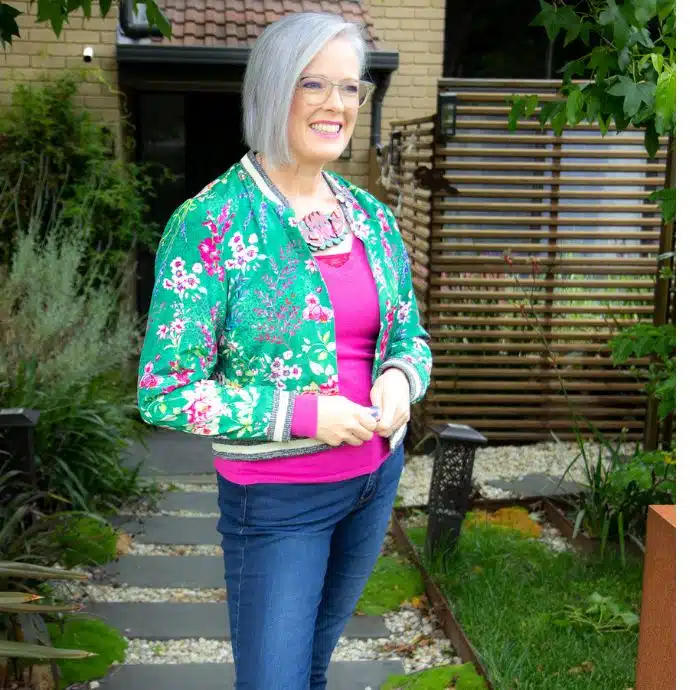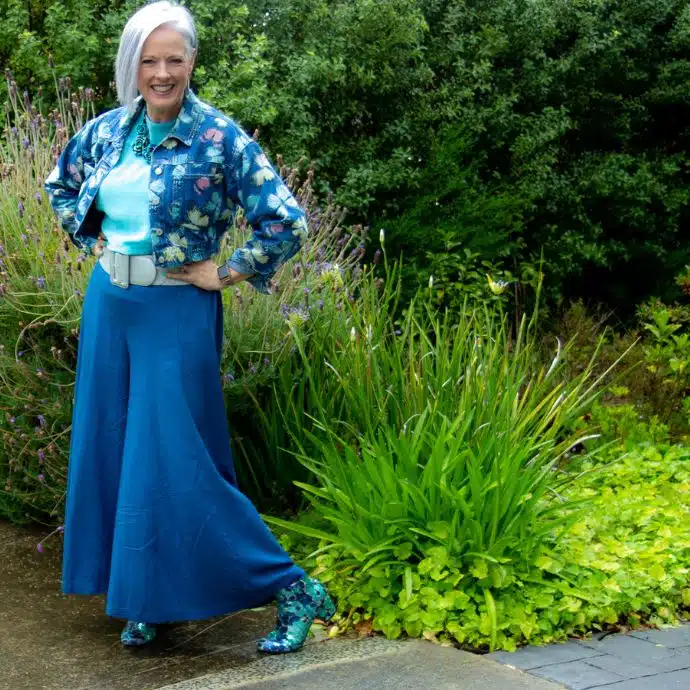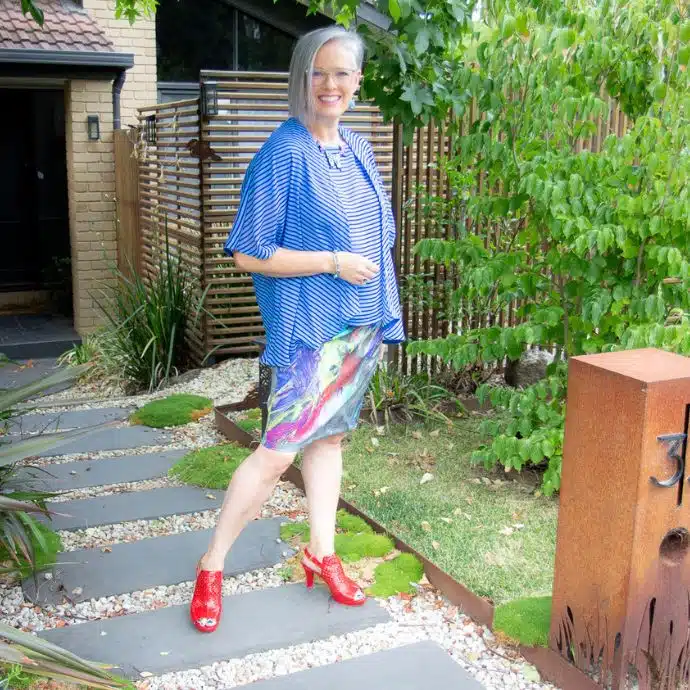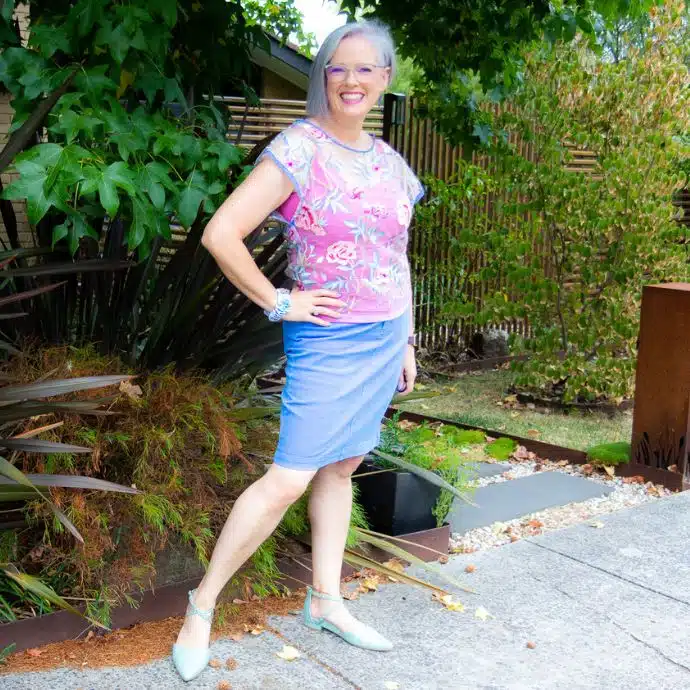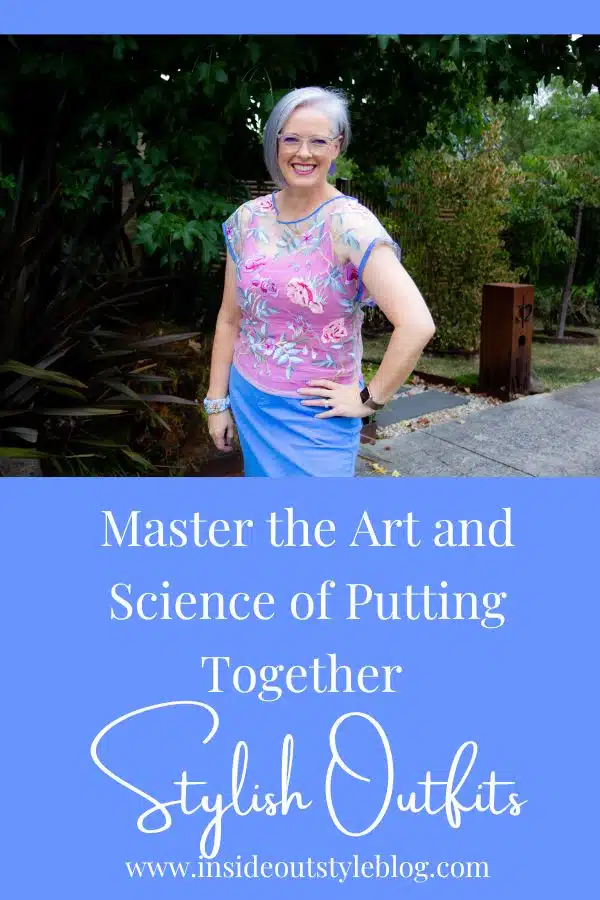[ad_1]
Having trouble putting together stylish outfits? you can still join me Outfit Masterclass Integration Week Challenge – It will take place from 17th to 21st July and learn more tips on putting clothes together – learn more and join here.
If so, you are not alone! Actually, in this video, I answer a reader’s question about how to put stylish clothes together.
Tired of looking through your wardrobe, feeling overwhelmed and anxious about putting together stylish outfits? Do you often try on more than one outfit and end up feeling like you have nothing to wear? If these are common issues for you, don’t worry! Let’s explore effective strategies to help you effortlessly coordinate your wardrobe. By understanding the principles of coordination, you will be able to create stylish clothes that reflect your personal style and make you feel confident. Let’s dive!
Coordinating outfits doesn’t have to be a daunting task. By following a few basic principles, you can simplify the process and create stylish looks with ease. When putting together an outfit, it is very important to consider factors such as volume, lines, shapes and the level of refinement. Let’s examine each of these principles in detail.
Understanding Your Wardrobe Composition
Before we dive into coordination techniques, let’s take some time to think about your wardrobe. How do you buy your clothes? Do you have a variety of pieces that can work together, or is your wardrobe full of items that just don’t match? Knowing your wardrobe composition is key to solving the “nothing to wear” dilemma. Consider two scenarios: the heroic buyer’s wardrobe and the voluminous and slimmer clothing dilemma.
Hero Buyer’s Wardrobe
Imagine walking into a closet overflowing with clothes, but the owner claims he has nothing to wear. This confusing situation often arises when people are attracted to hero pieces, which are standout pieces that fail to coordinate with the rest of the wardrobe. What the Hero Buyer has to do is look through his wardrobe for items that can be worn with hero parts, essentials that make the hero shine. These can be things like tight-fitting jeans or tops in a variety of colors that enhance your complexion but don’t have details like bat sleeves or ruffles so they can be easily worn under jackets or other clothing. Now the basics don’t have to be boring, but for any layering piece it needs to be practical!
Here I coordinated a hero bomber jacket with a solid-colored top and basic jeans so the hero wouldn’t be overwhelmed.
The Bulky and Thinner Garments Dilemma
On the other hand, we encounter wardrobes where each piece has a lot of volume. While bulky garments can be stylish, putting two such pieces together risks overwhelming the wearer, especially those with a petite frame. Adhering to the principle of volume, we can create harmonious ensembles by pairing a voluminous garment with a slimmer one, striking the perfect balance for a flattering silhouette.
So if you’ve bought a lot of bulky clothing, it’s worth looking at your current clothing to see what kind of body-fitting you need to make your bulky clothing work. Think skinny jeans with a voluminous top or a fitted knit top with your wide-leg jeans or a pleated midi skirt.
Coordination Principles
To effectively coordinate your outfits, there are four principles to consider:
- Volume Principle: Consider the proportion of your clothes. Pair a voluminous piece with a thinner one to create balance. It can be difficult to create matching outfits if everything in your wardrobe is too bulky. Consider adding thinner bottoms or tops to balance out your existing pieces.
- Principle of Related Lines: Notice how the lines on your clothes interact. Do they complement each other? For example, if you’re wearing a floral blouse, opt for round-shaped accessories like hoop earrings. By aligning the lines and shapes, you will achieve a harmonious look.
- Principle of Associated Shapes: Consider the shapes involved when coordinating different elements of your outfit, such as jewelry or accessories. Avoid mixing conflicting shapes that are not related to each other. Instead, look for connections between shapes in your outfit, such as matching the shape of your necklace to the collar of your garment.
- Improvement Principle: Classify your garments according to different levels of formality or sophistication. From formal business attire to casual casual wear to outdoor leisure wear, each level has its own style requirements. Make sure parts of a certain level work well together. Mixing incompatible healing levels can result in a ragged outfit.
Journey to Style Education
To fully grasp the art of dress coordination, we must embark on a style training journey. As personal preferences and body types vary, it is very important to discover what works for us on an individual level. Investing in resources like the Outfit Masterclass can equip you with the knowledge needed to identify your unique style tastes and create clothes that truly resonate with your personality and lifestyle.
Now that you understand the principles of coordination, it’s time to put them into action. Consider these additional tips:
- Evaluate your current wardrobe: Take a closer look at your clothes and evaluate whether they follow the principles of coordination. Are there any gaps or imbalances? Determine if you need to shop for specific items that will enhance your outfit combinations.
- Look for style tutorial: Expanding your knowledge of style is the key to effortless coordination. Educate yourself about color palettes, body shapes and personal style. This knowledge will enable you to make informed choices when shopping and putting together clothes.
- Consider a styling program: If you’re serious about improving your style and wardrobe coordination, consider enrolling in a styling program or course. These resources offer in-depth guidance tailored to your individual needs. Look for programs that cover topics like color analysis, body shape shaping, and clothing creation. 7 Steps to Style It includes all these elements of style and gives you the information you need to empower yourself to make the right choices for you.
- Embrace your uniqueness: Remember, personal style is just that personal. What works for someone else may not necessarily work for you. Embrace your individuality and discover how you can express yourself authentically with your clothes.
- Reflect and improve: Evaluate your wardrobe regularly and evaluate what works and what doesn’t. Take note of the clothes you like and that make you feel less secure. Use this self-reflection to refine your style choices and create a wardrobe that truly represents you.
Unlocking the art of putting together stylish outfits requires understanding the principles of coordination, an appreciation of the shapes and lines involved, and an eye for refinement. Armed with this knowledge, we can say goodbye to dressing anxiety and embrace the joy of choosing clothes that reflect our true selves. To remember, style education It’s the key to revealing your best self, so dive into the power of a well-coordinated wardrobe, explore and enjoy.
[ad_2]
Source link

